Find out about the world of illustrators by asking ‘who’s out there and what are they doing?’ Identify a range of illustrators whose work or ideas you find interesting. What do these illustrators tell you about current illustration practice? Where do they fit within the different areas of illustration practice?
Answering these questions is as much about developing your research skills in finding different illustrators as it is about looking at the illustrators themselves. Reflect on what resources you found useful.
I initially reflected on the illustrators/artists and areas of illustration that had the most impact on me during the previous units. I am beginning to find that there are particular fields of illustration that appeal to me much more than others and that I am able to remember/recognise work of certain practitioners and also consider who his/her influences may be. This then leads me to discover new illustrators for inspiration. I really like it when an illustration includes humour as I feel this can be a very effective method for addressing even the most challenging subjects.
I try to explore a range of resources when researching illustrators, although often the most accessible is via an online search, which can then be expanded on through the use of books. Alternatively, I may come across an illustrator’s work in a book or magazine/newspaper article, so I will look him/her up online. I follow particular artists on Instagram as well. Websites that I regularly use include: Illustration History, Lambiek Comiclopedia and the Association of Illustration. As I progress I would like to expand my research to include other sources such as journals/magazines. I also intend to work my way through the books suggested in the reading list for this unit (I previously read two of these for the KSI unit, but will read again for refreshment).
I have listed below a sample of the illustrators that I particularly like. I had to narrow the selection down as there was a very long list and it would have taken a great deal of time to write about each one
- Steve Nelson – I first came across Steve Nelson’s work in the form of adverts for Confused.com on front of the Metro newspaper. I really love the simplicity, colour and humour of his cartoons. He has a recognisable style across all his work and I can spend far too much time scrolling through his website looking at them. I would place Steve Nelson in the category of Narrative Illustration, although some of his illustrations do comment on politics/current issues, which would place him under Editorial Illustration as well.
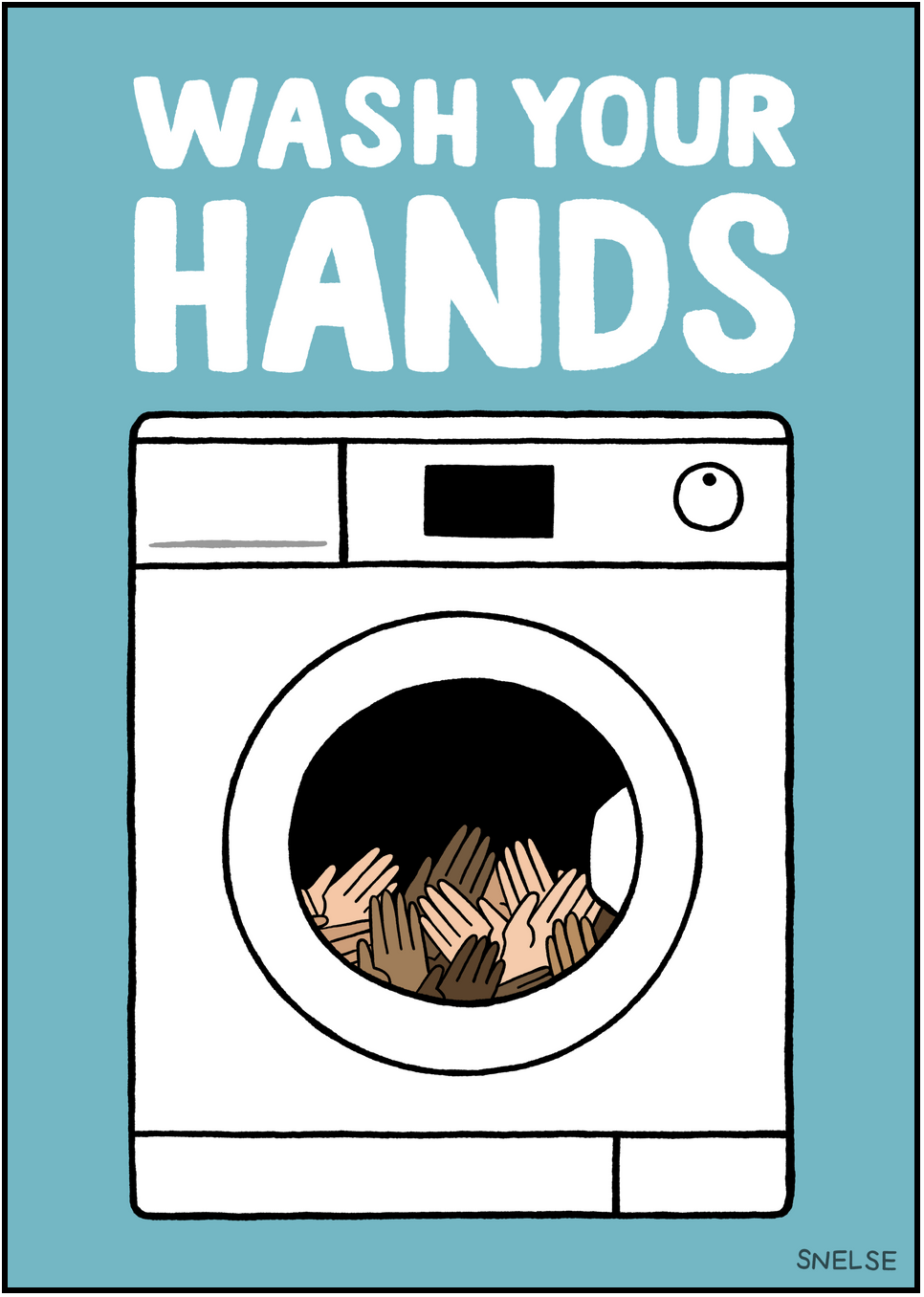
- Ben Jennings – I first saw Ben Jennings work via a segment on the local news. Similarly to Steve Nelson, Jennings’s style is cartoonish, but his work is definitely commenting on current political issues both at home and abroad. Once I started looking through his Instagram feed and website, I realised I had actually seen his work before in newspaper editorials. Many of Jennings’s illustration are caricatures of politicians/well-known figures, so I would class him as Editorial Illustration. His work is really rich in colour.
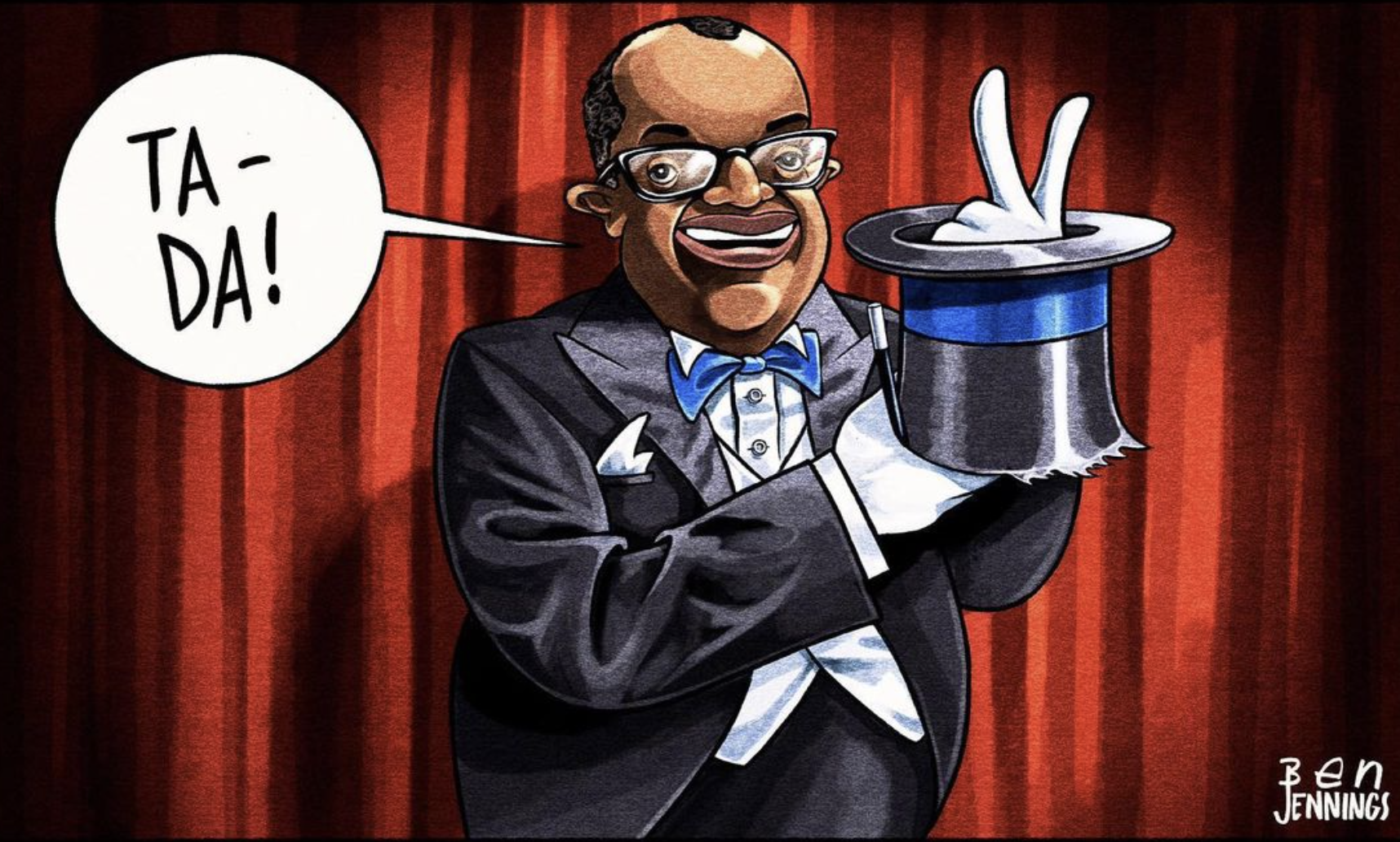
- Shaun Tan – I learnt about Shaun Tan during the Key Steps to Illustration unit when my tutor suggested I read The Arrival and I was so impressed by the quality of his illustrations. I could not believe that he had created them just using graphite pencils. The drawings are so emotive and delicate. I really like his style of character design. He is also able to clearly convey emotion and what is being communicated in the images without the use of any text at all. Even though the world he created in The Arrival is fictional, the topic is very relatable. I have great deal of respect for Shaun Tan’s skills and I am planning on reading more of his books. I would class Tan’s work as Narrative Illustration, whilst crossing over into Editorial Illustration.
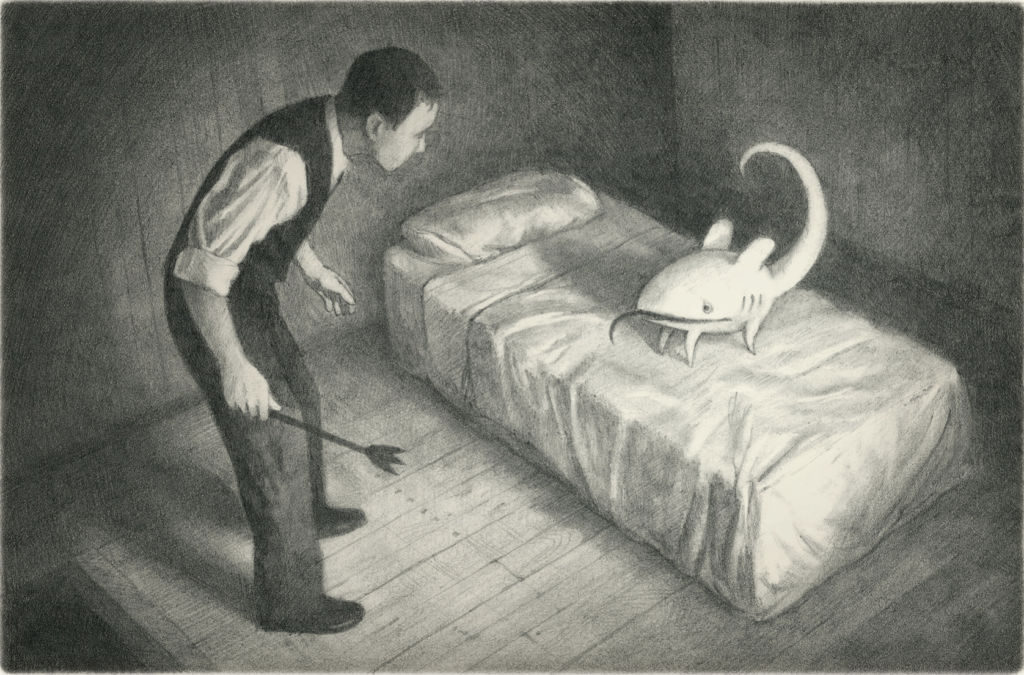
- Vera Brosgol – my tutor for the Graphic Fiction unit suggested I read Anya’s Ghost by Vera Brosgol. Her style of illustration and the expressive, relatable characters really appealed to me. I felt inspired by Brosgol’s limited colour palette in this particular novel. When I examined the illustrations more closely I could see that the lines were not ‘perfect’ and Brosgol barely added any detail to objects in the background of the panels, which enhanced the sense of depth and focus on the foreground. I thoroughly enjoyed the story and felt the layout of the panels across the pages was very imaginative and effective. I would place Brosgol’s work mainly in Narrative Illustration.

- Chris Ware – I discovered Chris Ware during research for the Graphic Fiction unit. His work has a clean, almost clinical, appearance at first glance, but on closer inspection it becomes evident that Ware is very perceptive of human behaviour. It is humorous and relatable. His style reminds me of Hergé in terms of line and the subdued use of colour. As a side note I also learnt that Chris Ware is extremely introverted, which I can relate to and so feel a certain connection to his work in that way too. I would class Ware’s work as a crossover of Technical Illustration, Editorial Illustration and Narrative Illustration.
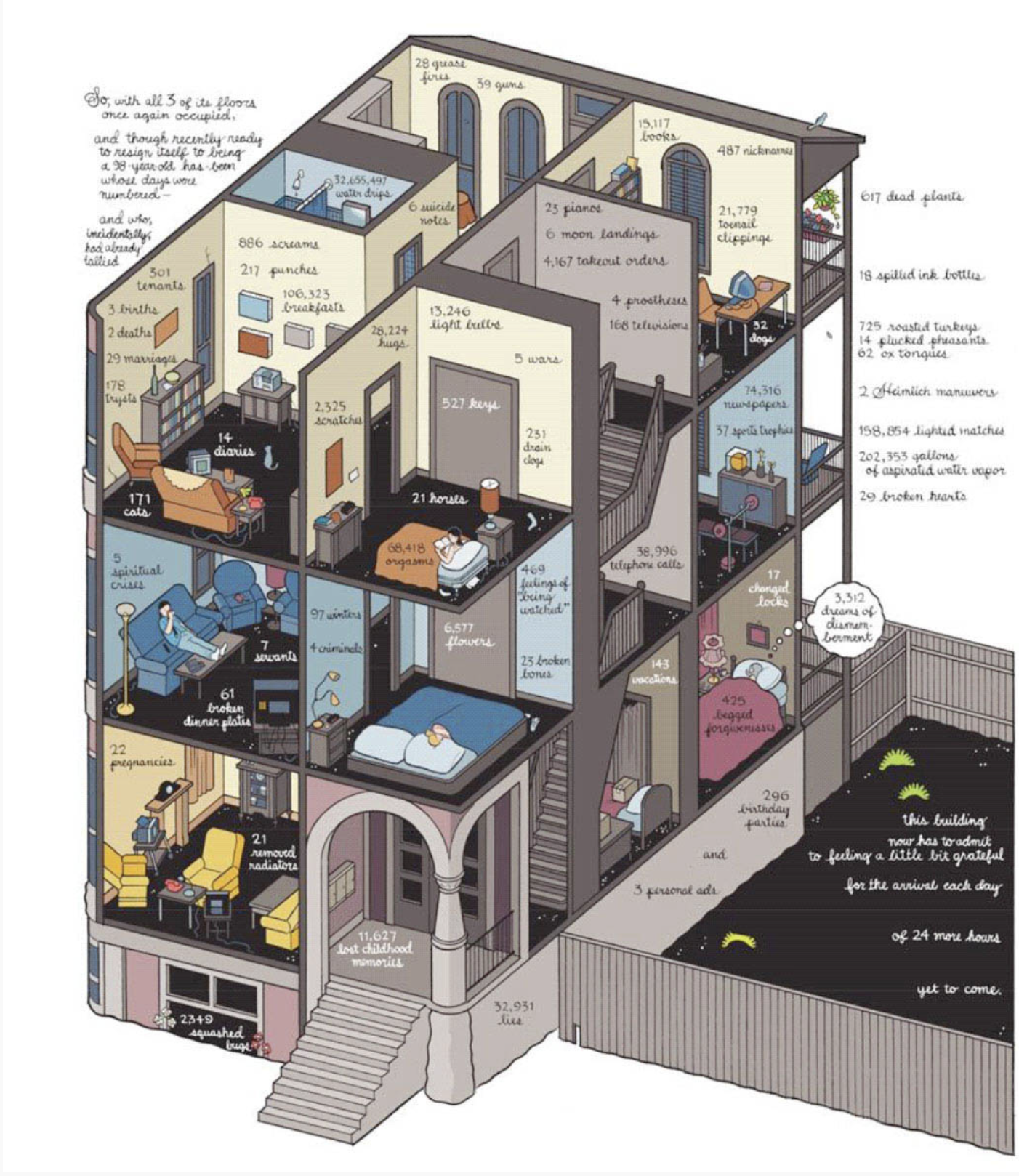
- Inna Gertsberg – I found Inna Gertsberg via the AOI portfolio. I was instantly drawn to her style of character designs. In the example below, I think she has used a wash of watercolour/ink as the base and then built the character on top using pen, before filling in additional colour details. I like the way Gertsberg has applied the line, which adds to the sense of movement and texture. The humour of the scenario and the character’s emotions has been successfully captured. I would class Gertsberg’s work as Narrative Illustration.
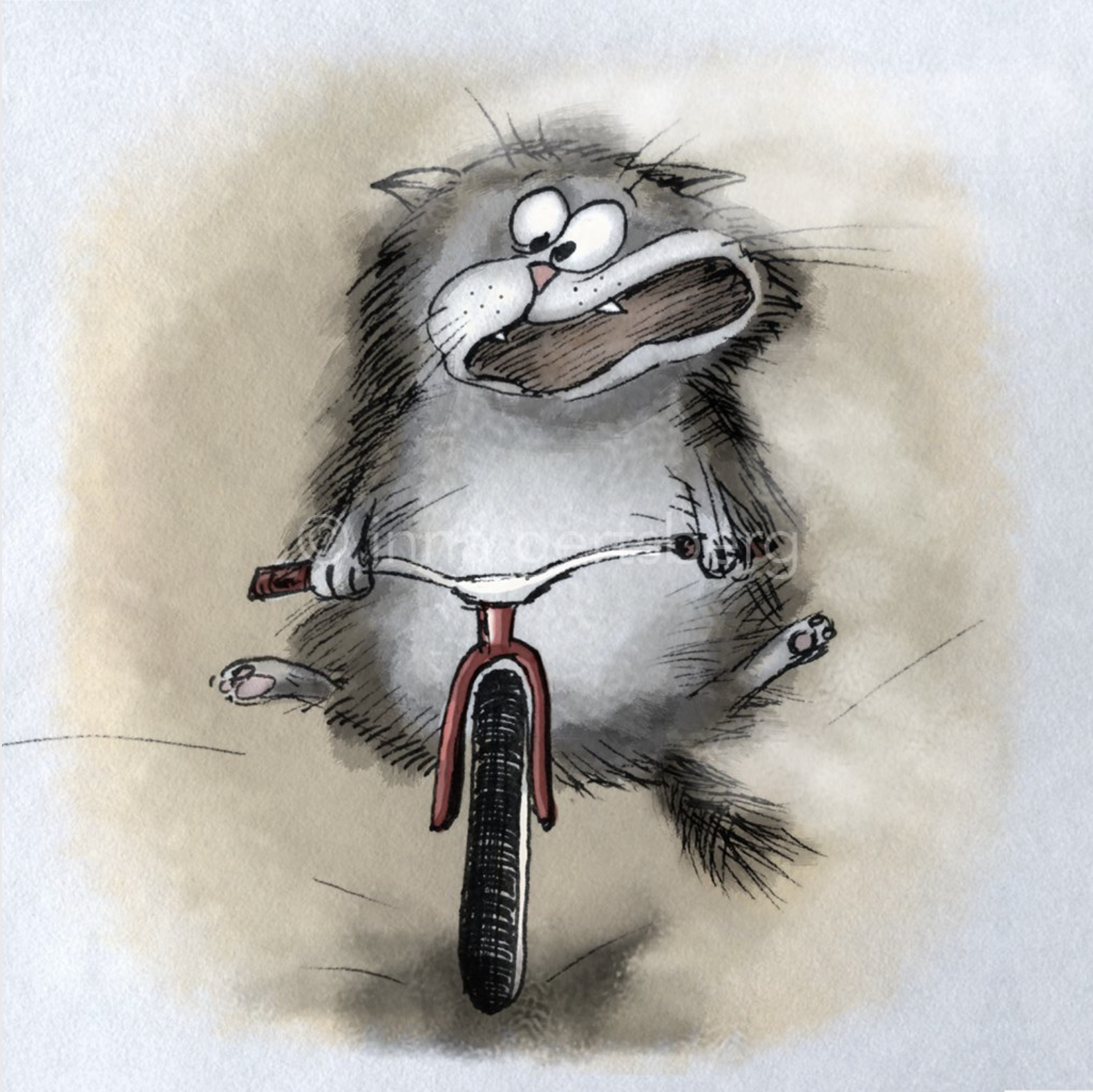
- Jonathan Emmerson – Another artist I selected from the AOI portfolio. I attempted linocut printing for a couple of exercises in previous units and I liked the bold, graphic style that is created. Evidently, someone like Jonathan Emmerson with much more experience and talent in the skill of printing than me and so can produce such images as seen below. I particularly like the addition of colour. Printing is certainly an area of illustration I would like to explore in greater depth. I would categorise Emmerson as Narrative Illustration.
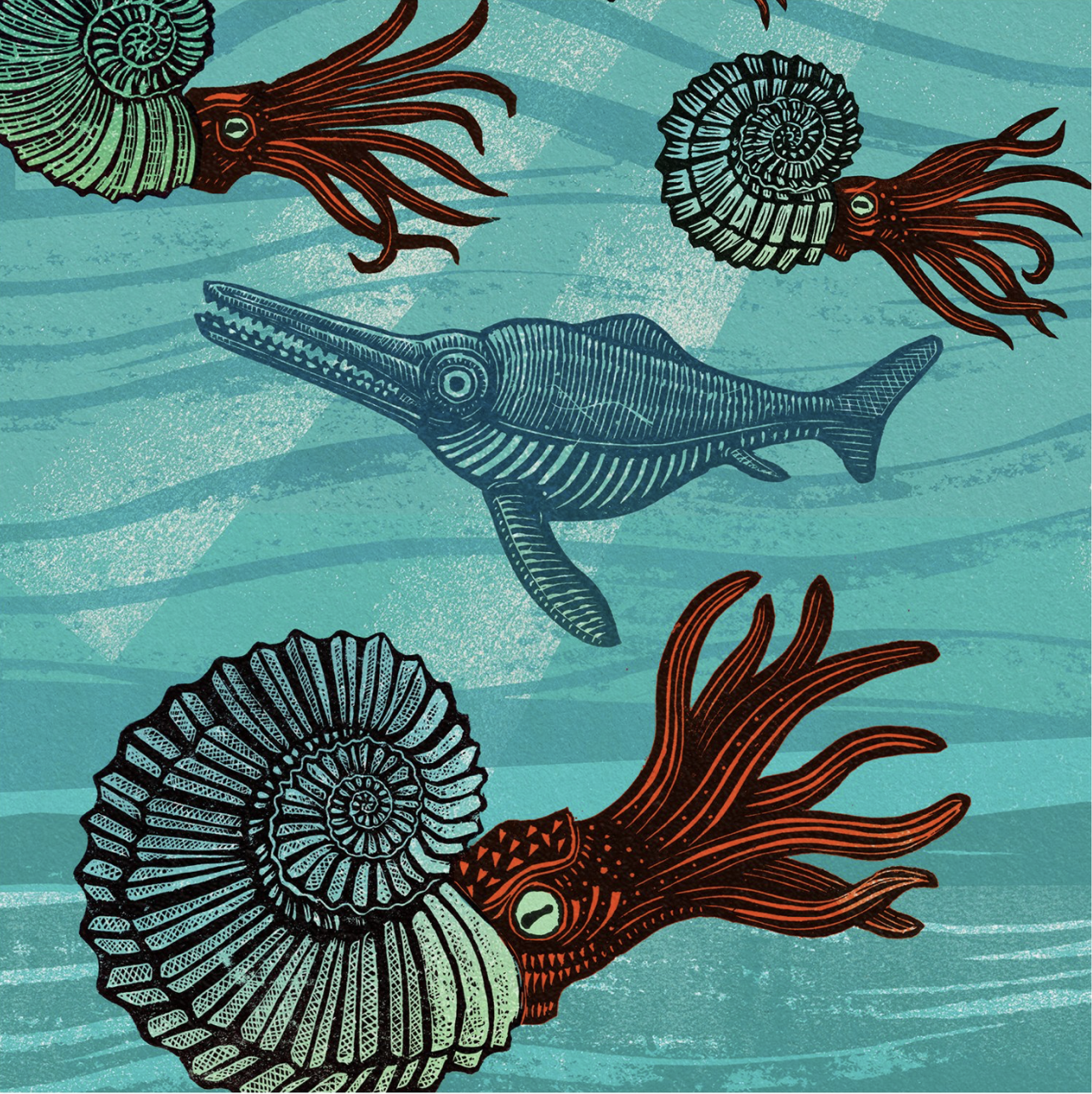
- David Roberts – My introduction to David Roberts’s work as an illustrator was the books The Bolds by Julian Clary. I was immediately delighted by his cheeky, humourous style that perfectly suited the text. I think Roberts’s illustrations are deceptively simple in appearance, but it is clear he has a strong knowledge of the human figure (which he applies to his animal characters as well) and has created this own distinctive style. After further investigation I realised that Roberts must be influenced by Edward Gorey, as can be seen in the ink drawing below from Roberts’s Instagram feed. I would class David Roberts as Narrative Illustration and Editorial Illustration, the latter because his work often comments on current issues such as gender identity and race.
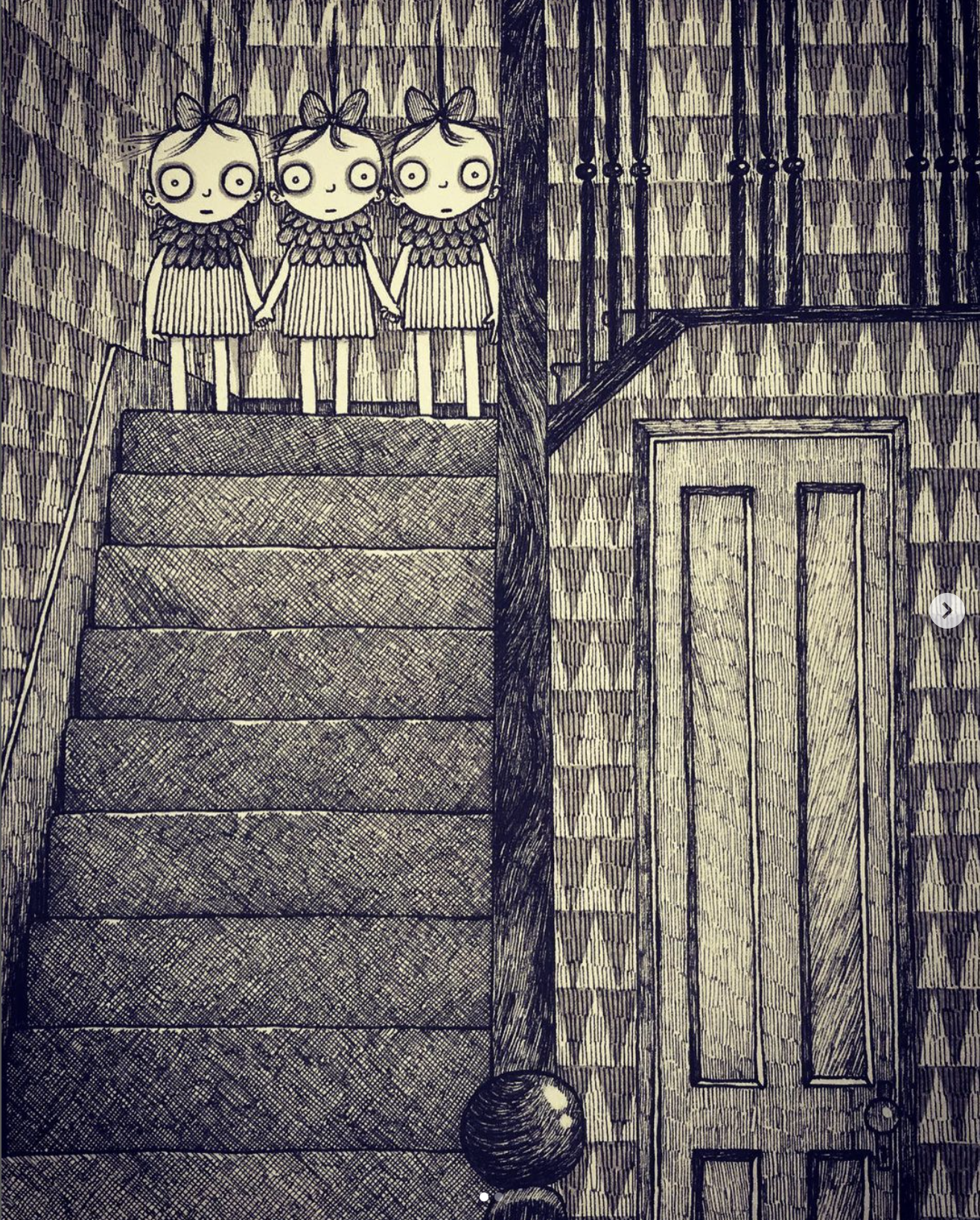
- Frank Miller – I became aware of Frank Miller when I watched the film version of his graphic novel Sin City. His style of graphic, mainly monochromatic ink work is instantly recognisable. Often, as in the example below, the use of light and shadow is central to Miller’s work, with the character’s face/body only partially lit to create a brooding atmosphere. I would class Miller’s work as Narrative Illustration.
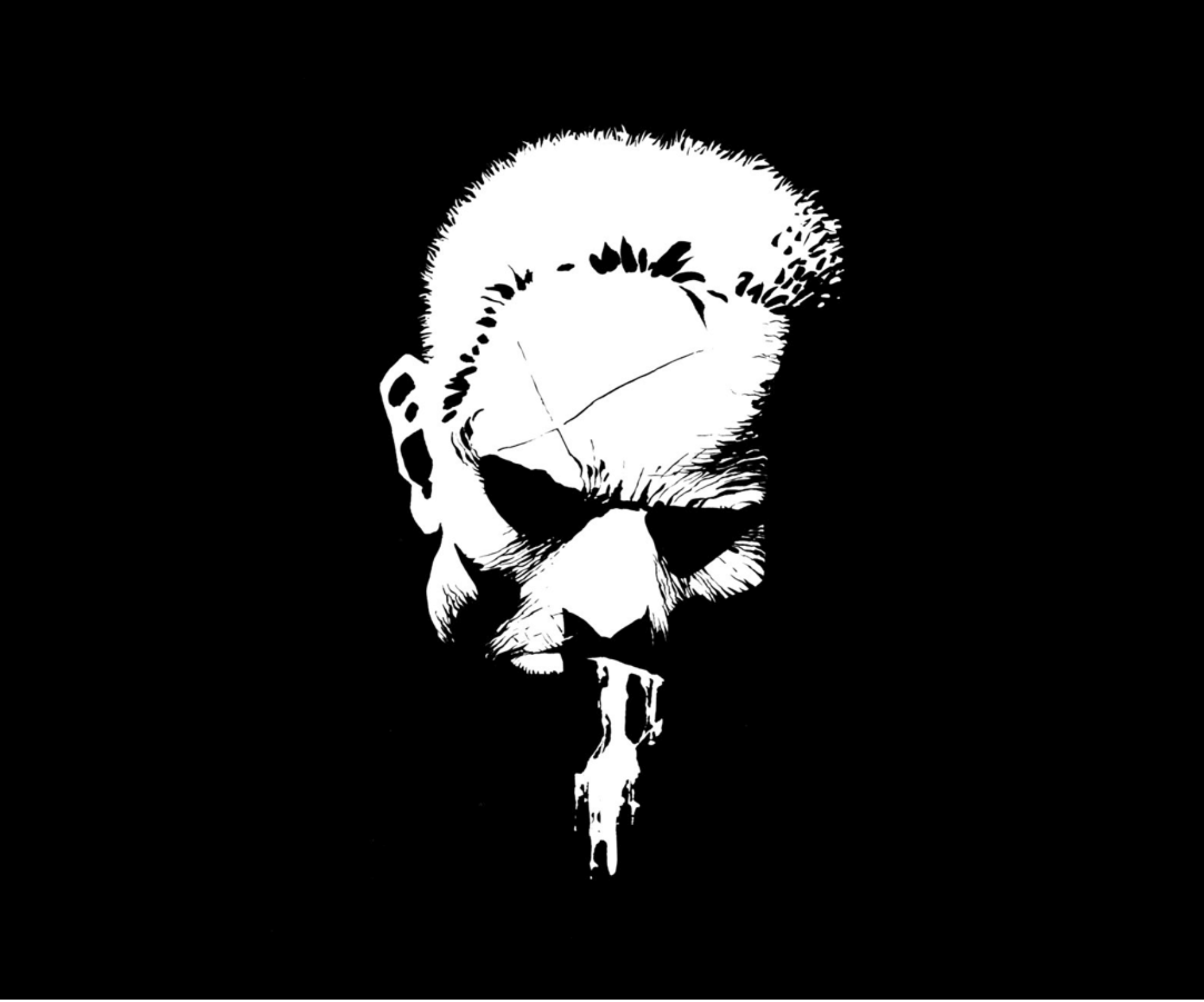
- Peter Kuper – An artist I found by chance, a lot of Peter Kuper’s work is definitely Editorial Illustration as he expresses strong opinions on political and current issues (he is certainly no fan of Donald Trump) and his work appears in US publications such as The New Yorker and Mad. Kuper also produces comics, which could therefore be classed as Narrative Illustration.
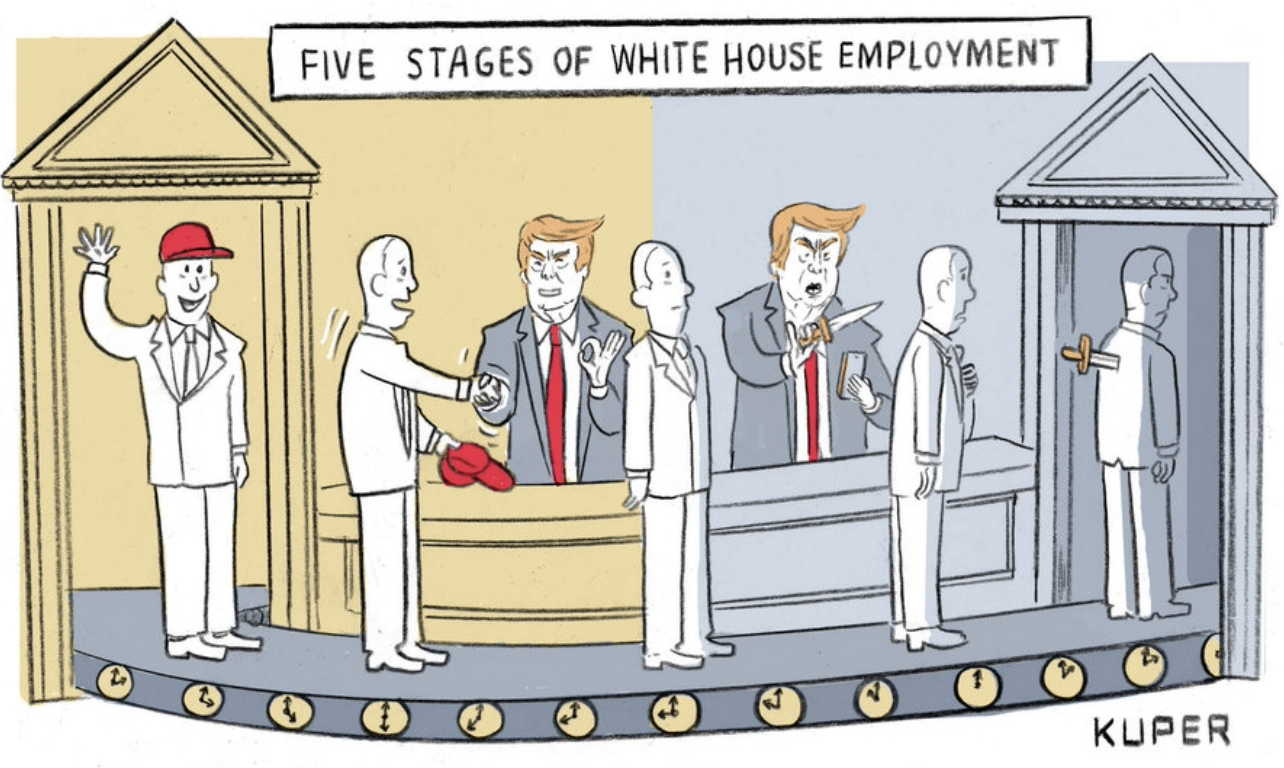
- R Kikuo Johnson – I happened to come across R Kikuo Johnson’s work and I liked his character designs and confident use of colour as demonstrated in the illustration below. I think Johnson’s work is mostly digital, but it has a hand-drawn quality to it and he clearly has a strong grasp on human anatomy and figure drawing. Johnson produces work for publications, adverts (as below) and graphic novels, so his illustrations can be classed as Editorial, Persuasive/Identity and Narrative.
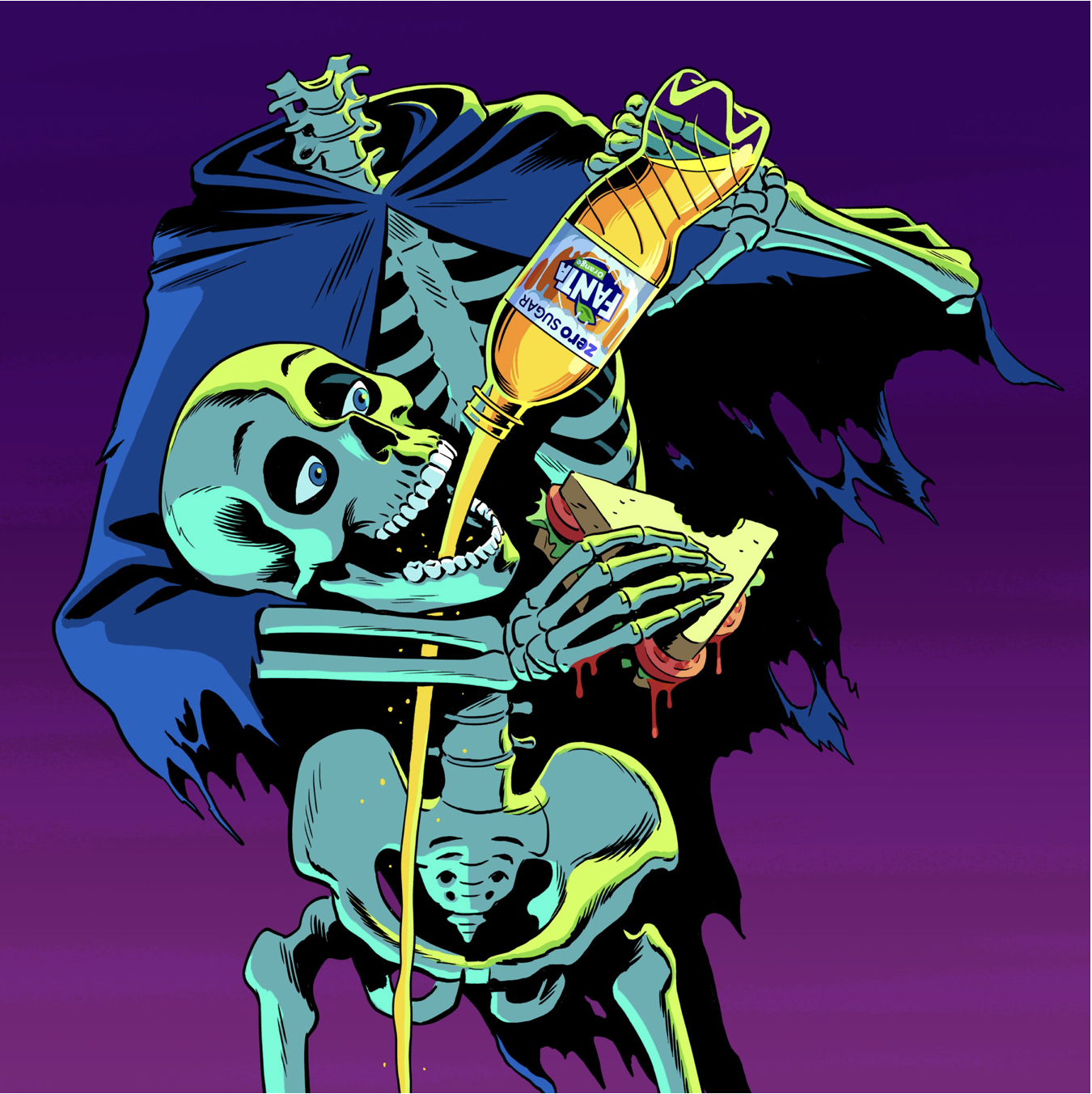
- Roz Chast – I learnt about Rob Chast while researching during the Graphic Fiction unit. I love the humour of her work, as it is really relatable and current, often focusing on everyday life. I think she is able to perfectly capture the thoughts, worries, emotions and, sometimes questionable, behaviour of humans. I like the sketchy style of Chast’s cartoons and that the text is handwritten. I plan on reading her book Can’t We Talk About Something More Pleasant? I would class Roz Chast’s work as Narrative Illustration and Editorial Illustration.
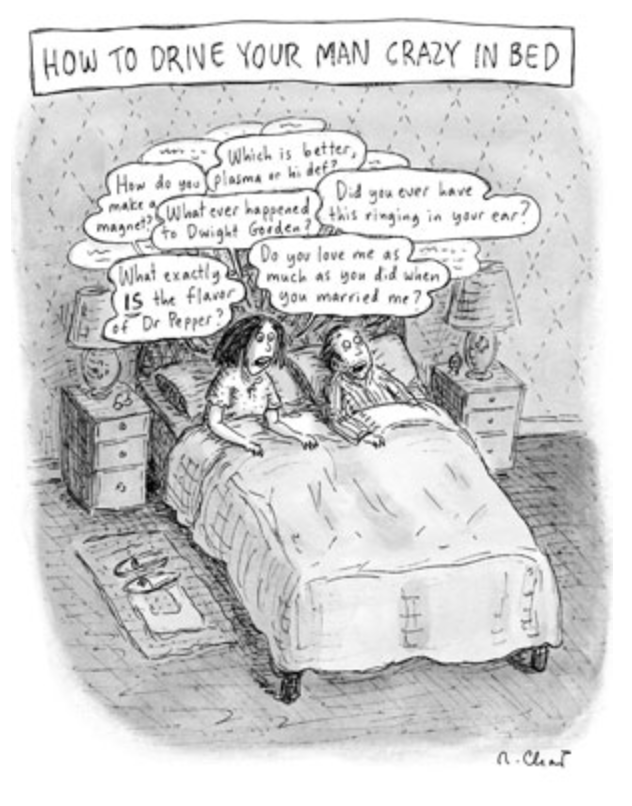
- Stephen Kroninger – I am not usually a fan of collage work, probably because I am terrible at it, but there is something about Stephen Kroninger’s work that really appeals to me. For example, I find it very impressive that he is able to create such recognisable caricatures from so few pieces of paper, as seen below. If I am required to do any collage work in the future I will definitely look to Kroninger for inspiration. His range of work covers Editorial Illustration and Narrative Illustration.
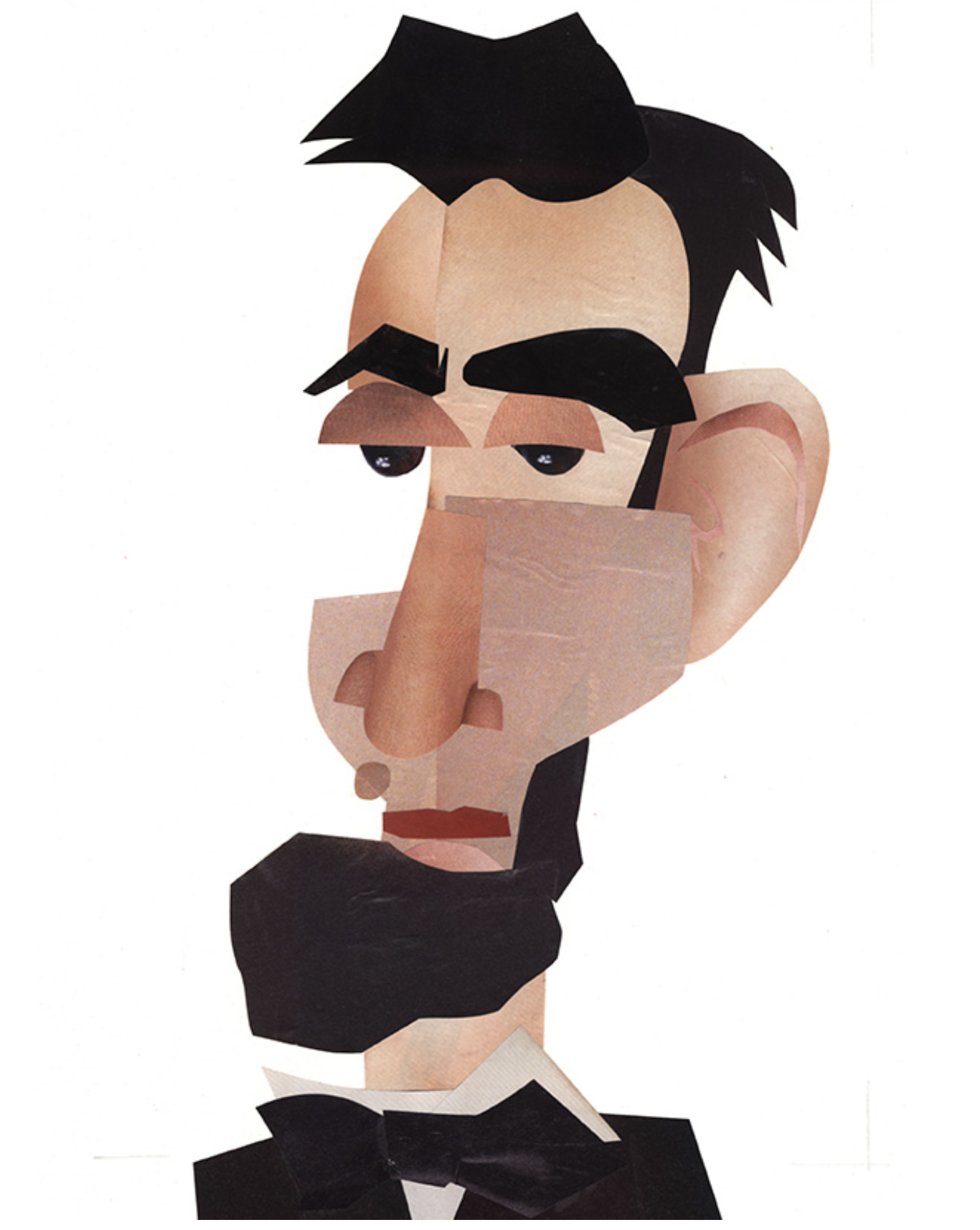
Source: Stephen Kroninger
- Miki Sato – As with Kroninger above, Miki Sato is another example of a collage artist. Sato uses cut out pieces of paper felt to build up layers in to 3D illustrations as seen in the example below. I really like her designs and, again, I would certainly like to explore this method of collage in the future. I think Sato manages to capture intricate details and create beautiful compositions. She also has a strong understanding of how to use subtle colours. I would class Sato’s work as Narrative Illustration and Editorial Illustration.
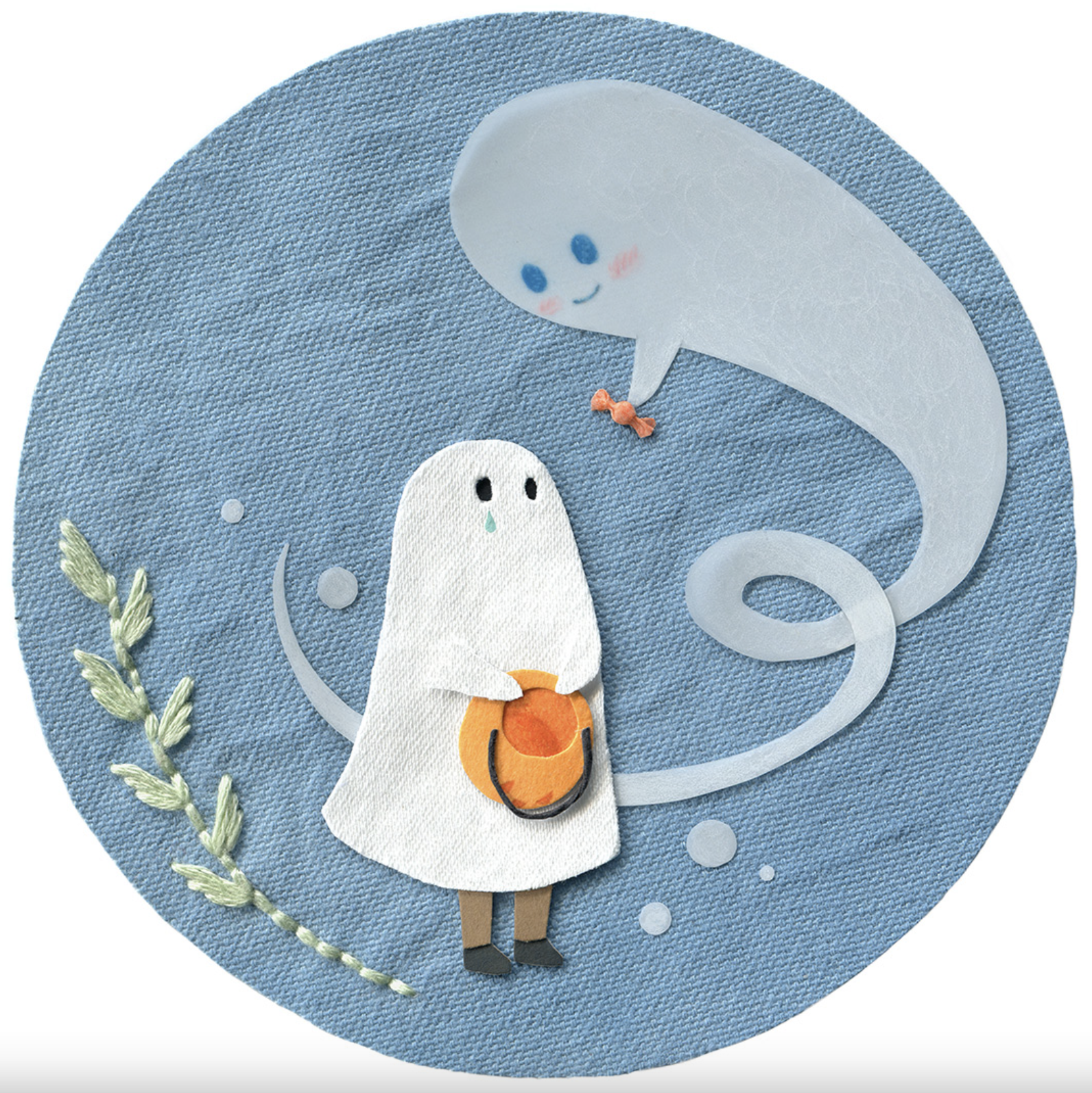
- Malika Favre – I found Malika Favre during research for the KSI unit. I have always liked vector graphic style illustrations, but I think Favre’s are particularly strong and her use of colour is impressive, often limited to two complementary colours alongside black and white. Most of Favre’s work, regardless of the illustration’s underlying intention, includes a woman with bright red lips. Her compositions are thoughtfully planned out and the shapes Favre uses are smooth and limited in number. She also clearly understands how to use shadows and highlights effectively. I would class Favre’s range of work as Editorial, Persuasive/Identity and Narrative Illustration.
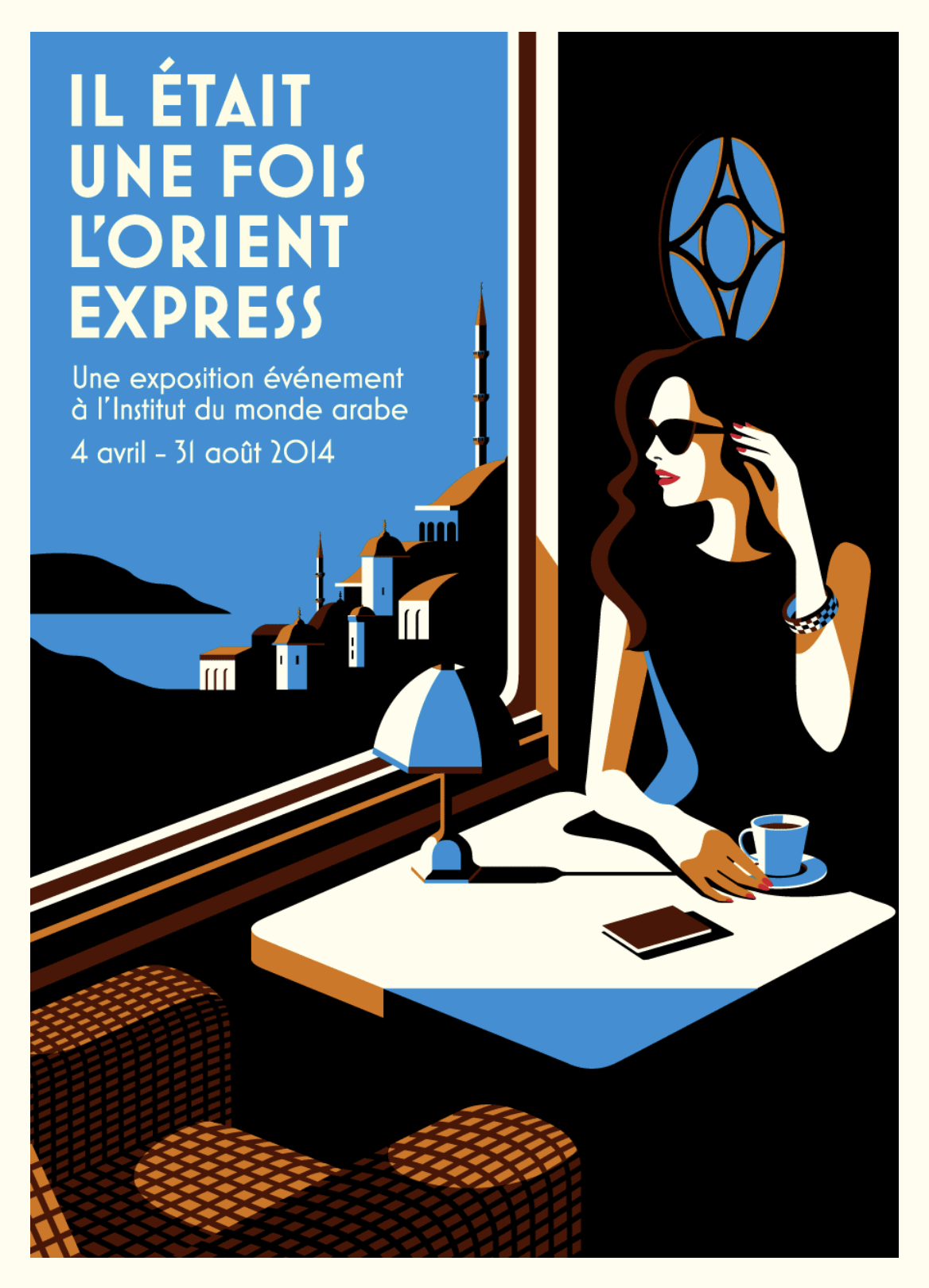
Source: Malika Favre.
- Lane Smith – I really like the playful characters designed by Lane Smith, as seen on the book cover below. Smith uses texture very effectively (something I hope to improve on) and the colours are quite subdued. He clearly has a strong sense of composition and knows how to utilise white space. I find his illustrations to be a bit like a soft blanket of cosiness. I also learnt that, like Chris Ware, Lane Smith is extremely shy and that resonates well with me! I would categorise Smith’s work as Narrative Illustration.
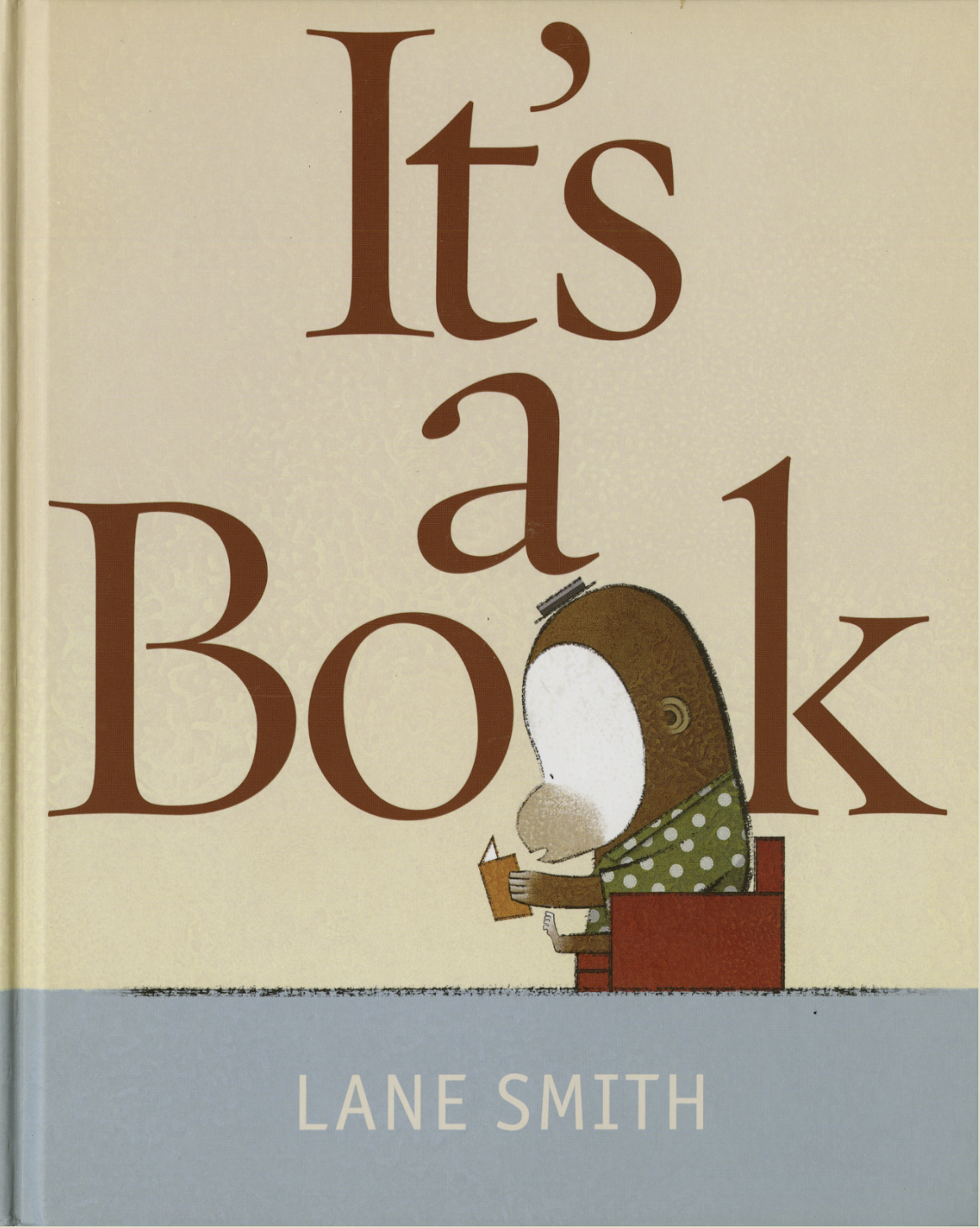
- Christoph Niemann – When I came across Christoph Niemann’s illustrations I was really impressed with how simple yet so thoughtfully creative his work is. The work on Niemann’s website is wide-ranging, but I particularly like the ‘Sunday Sketches’ selection in which he has incorporated everyday items, such as a strawberry below, and created a completely unrelated meaning from them – seemingly so simple! I would class Christoph Niemann’s work as Editorial Illustration, Narrative Illustration and Persuasive/Identity Illustration as he has such a broad portfolio.
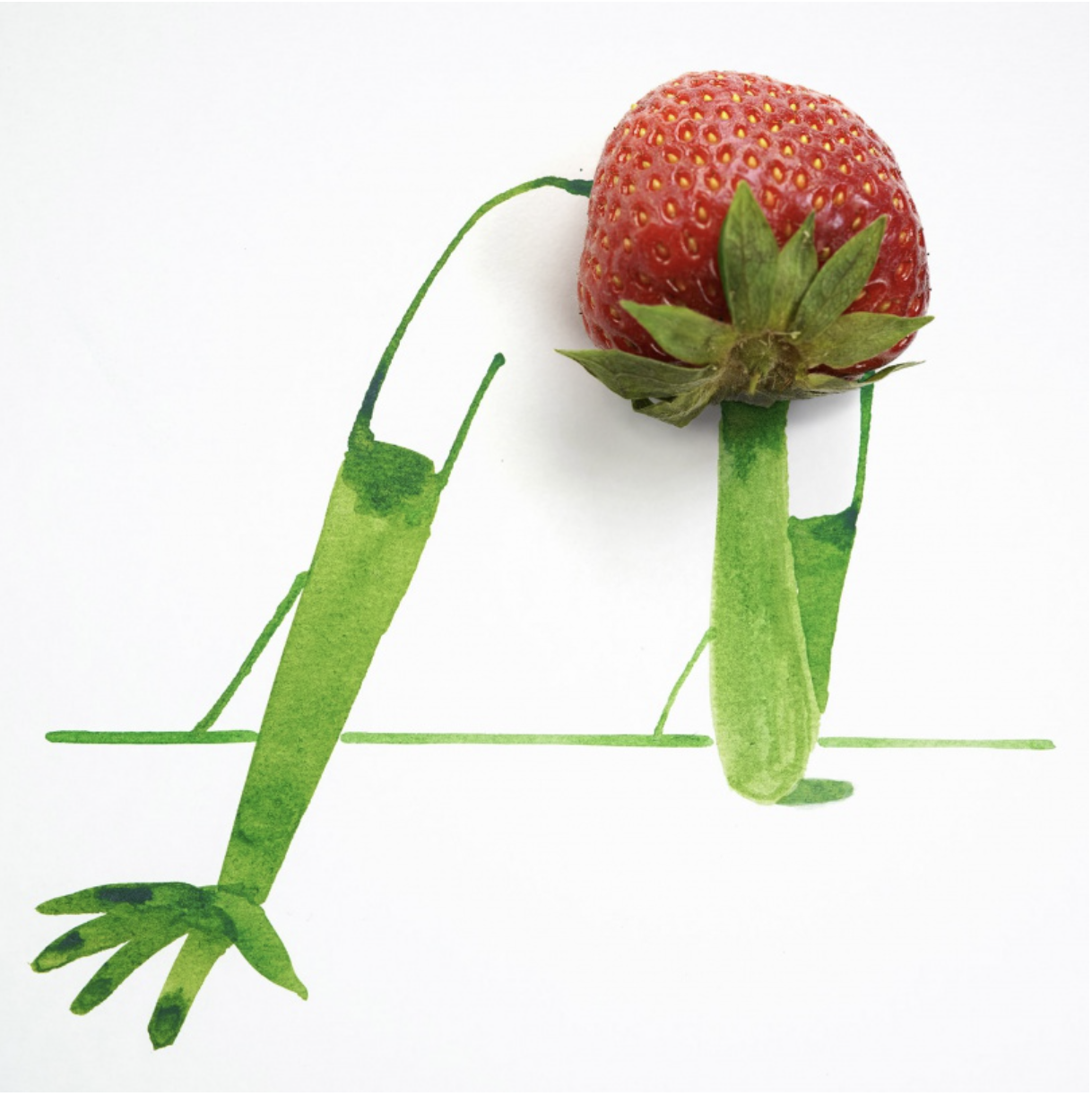
- Akiko Miyakoshi – the style of illustrations produced by Akiko Miyakoshi remind me of those by Shaun Tan. They have a delicate and emotive quality to them. Miyakoshi also seems to work on a very small scale, which makes her detailed, intricate work more impressive to me. She uses a range of materials including graphite pencils and charcoal. I feel Miyakoshi has strong sense of composition and tone, both of which are demonstrated in the illustration below. I would class AKiko Miyakoshi’s work as Narrative Illustration and Persuasive/Identity Illustration.
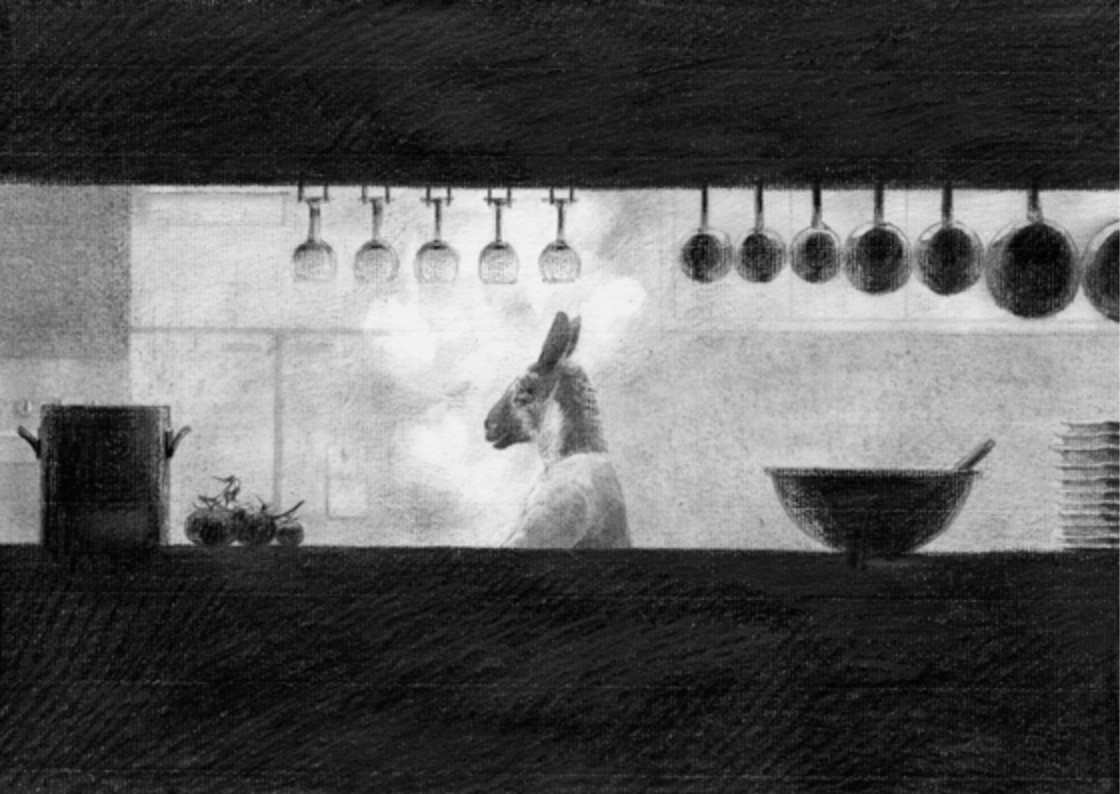
- Ralph Steadman – the illustrations by Ralph Steadman are quite unique and recognisable. They tend to show humans in their worst possible light in a humorous way, whilst also making the viewer think. His illustrations are often a bit grotesque, but I think they are great! Steadman usually includes splatters of ink or paint on the page, which he then incorporates into the illustration, as can be see in the delightful example below. Ralph Steadman is well-known for his satirical cartoons poking intelligent fun at politicians and humans in general. I would class Steadman’s work as Editorial Illustration and Narrative Illustration.
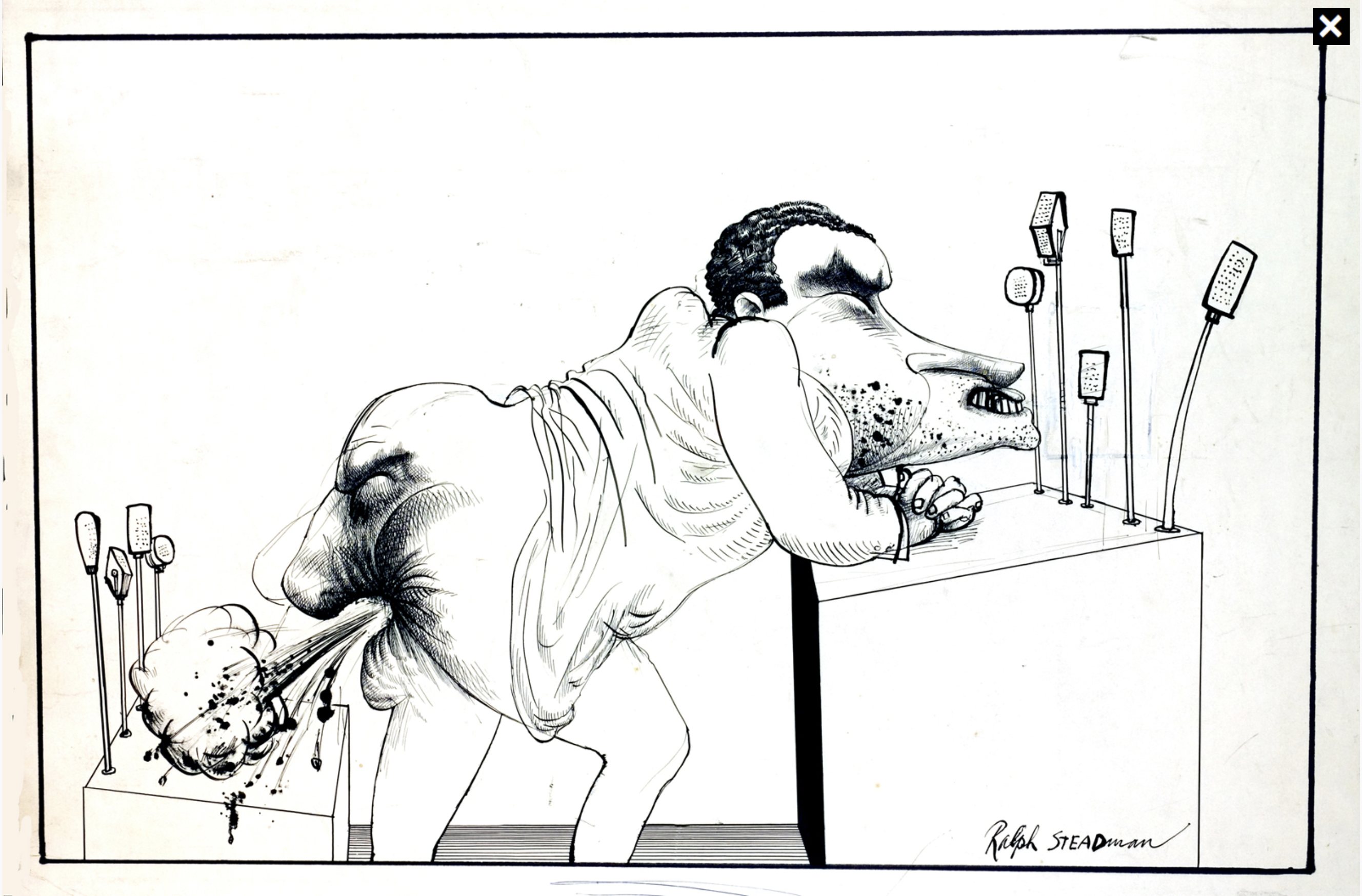
Source: Ralph Steadman.
- Edward Gorey – one of my favourite illustrators whom I found during the Graphic Fiction unit, Edward Gorey’s work is mainly sinister and gothic. Each time I see another example of his work, I am inspired and amazed by the level of detail he managed to create simply using lines (discovering Gorey’s style illustration encouraged me to improve my mark-making skills). I would class Gorey’s work as Narrative Illustration.
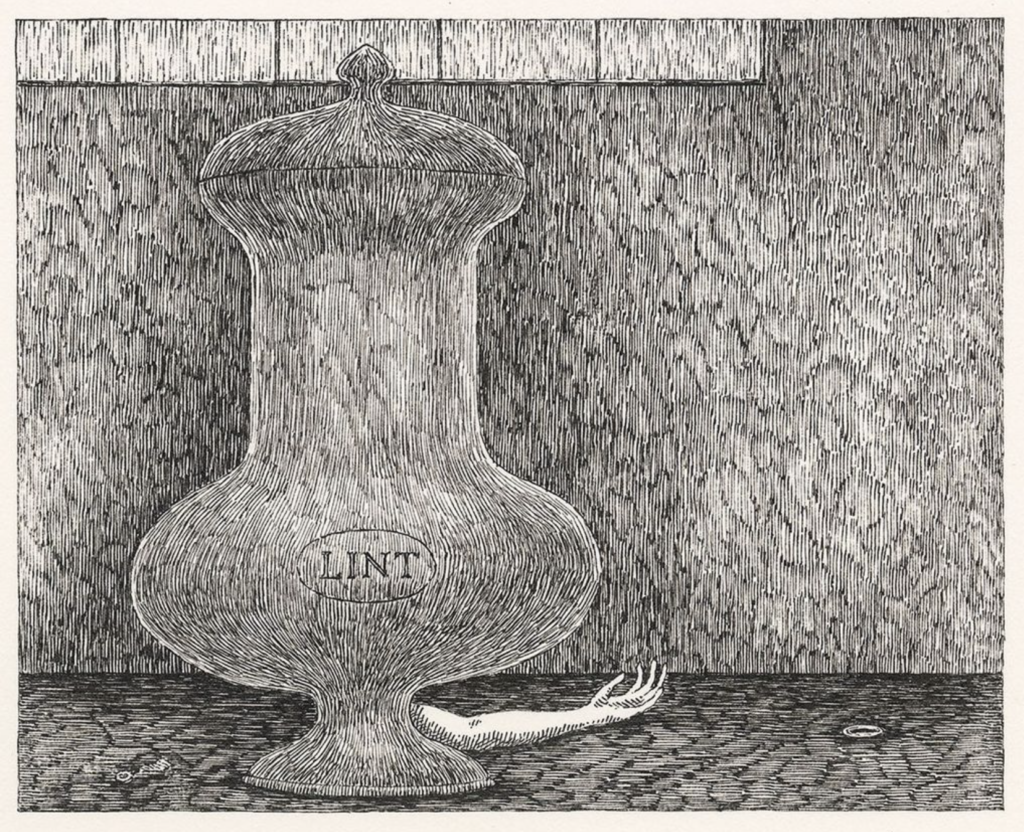
Bibliography
Association of Illustrators (2022) Folios. Available at: https://theaoi.com/folios (Accessed 27 September 2022).
bjenningsuk(2022) Ben Jennings. Available at: https://www.instagram.com/bjenningsuk/ (Accessed 27 September 2022).
Brosgol, V. (2022) verabee. Available at: https://www.verabee.com (Accessed 27 September 2022).
Chast, R. (n.d.) Roz Chatt. Available at: https://rozchast.com (Accessed 28 September 2022).
dr.illustration (2022) David Roberts. Available at: https://www.instagram.com/dr.illustration/ (Accessed 27 September 2022).
edwardgoreytrust (2022). Edward Gorey Charitable Trust. Available at: https://www.instagram.com/edwardgoreytrust/ (Accessed 27 September 2022).
Emmerson, J. (2022) Jonathan Emmerson. Available at: https://www.jonathanemmerson.com (Accessed 28 September 2022).
Favre, M. (2022) Malika Favre. Available at: https://www.malikafavre.com (Accessed 27 September 2022).
Gertsberg, I. (2022) innagertsberg. Available at: https://www.innagertsberg.com (Accessed 28 September 2022).
Illustration History (n.d.) Artists: Chris Ware. Available at: https://www.illustrationhistory.org/artists/chris-ware (Accessed 28 September 2022).
Jennings, B. (2022) Ben Jennings. Available at: https://ben-jennings.com (Accessed 27 September 2022).
Johnson, R.K. (2020) R Kikuo Johnson. Available at: https://www.rkikuojohnson.com (Accessed 27/09/2022).
Kroninger, S. (2022) Stephen Kroninger’s Illustration. Available at: https://www.stephenkroninger.net (Accessed 27/09/2022).
Kuper, P. (2018) Peter Kuper Art. Available at: https://www.peterkuper.com (Accessed 28/09/2022).
Miller, F. (2020) Frank Miller – The Art of Frank Miller. Available at: https://frankmillerink.com (Accessed 27 September 2022).
Miyakoshi, A. (2022) Akiko Miyakoshi. Available at: http://miyakoshiakiko.com (Accessed 28 September 2022).
Nelson, S. (2022). Steve Nelson: Confused. Available at: https://www.snelse.co.uk/confused-metro (Accessed 27 September 2022).
Nelson, S. (2022) Steve Nelson – Illustrator. Available at: https://www.snelse.co.uk/ (Accessed 27 September 2022).
Niemann, C. (2022) Christoph Niemann. Available at: https://www.christophniemann.com (Accessed 27 September 2022).
Roberts, D. (2022) David Roberts Illustration. Available at: http://davidrobertsillustration.com/index.html (Accessed 27 September 2022).
Sato, M. (2022) Miki Sato – Illustration. Available at: https://mikisatoillustration.com (Accessed 27 September 2022).
Smith, L. (2022) Lane Smith Books. Available at: https://www.lanesmithbooks.com (Accessed 28 September 2022).
Steadman, R. (2022) Ralph Steadman Art Collection. Available at: https://www.ralphsteadman.com/collections/ (Accessed 28 September 2022).
Tan, S. (2022) shaun tan. Available at: https://www.shauntan.net (Accessed 27 September 2022).
The Edward Gorey Charitable Trust (2022). The Edward Gorey Charitable Trust. Available at: https://edwardgorey.org (Accessed 27 September 2022).